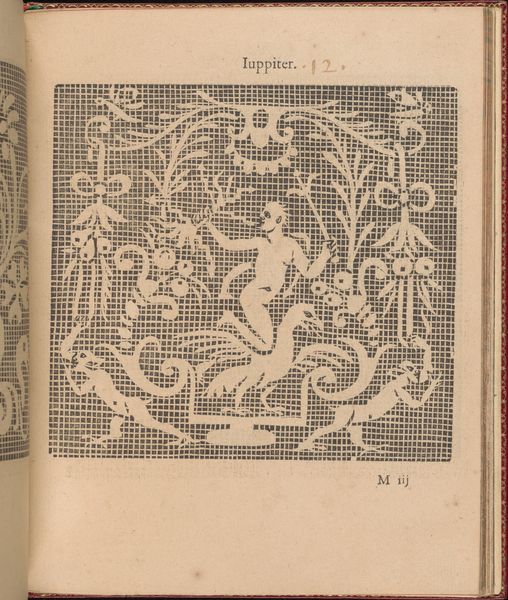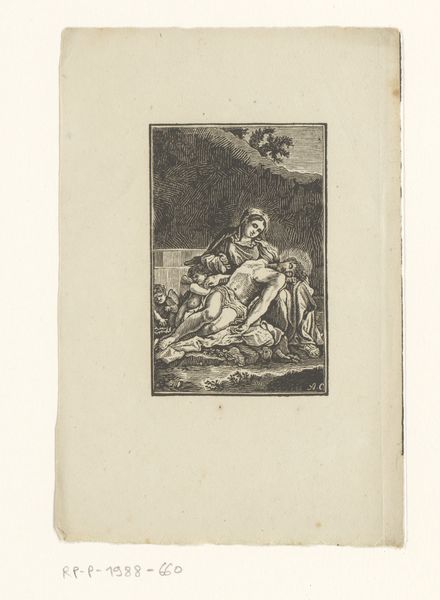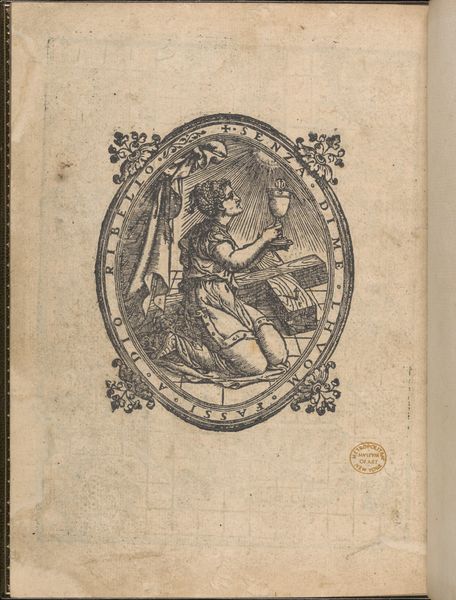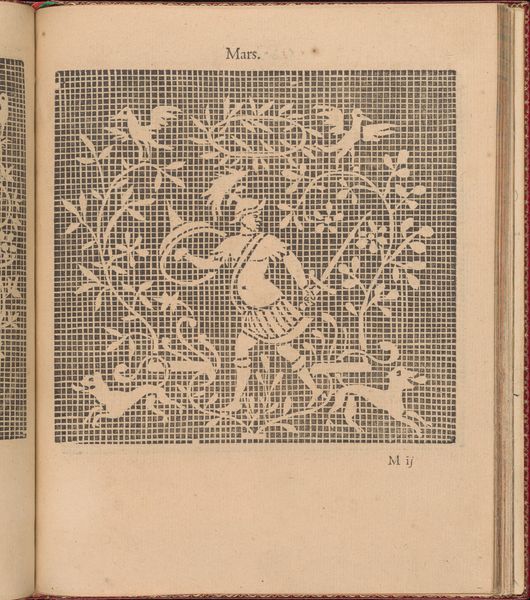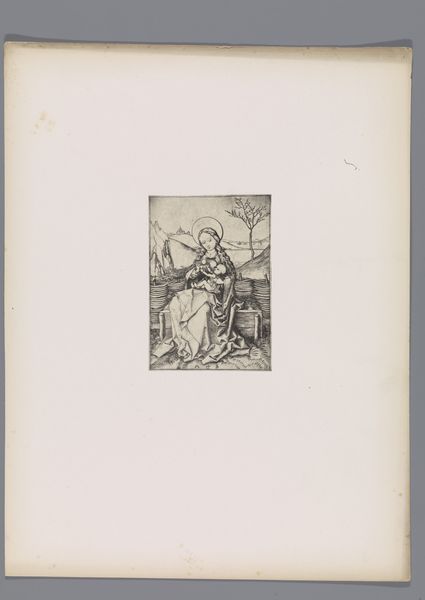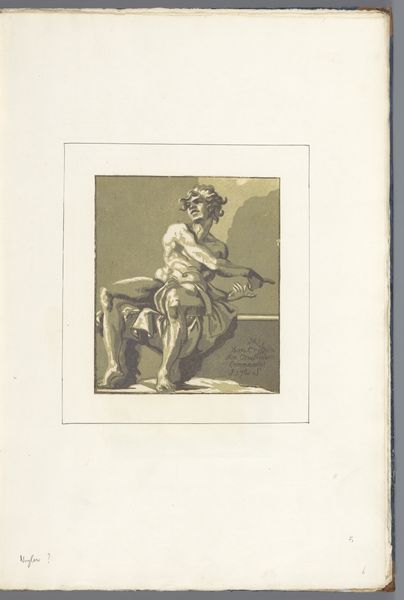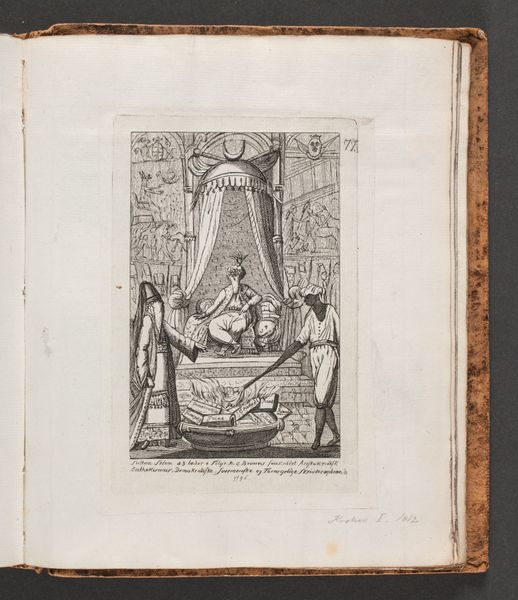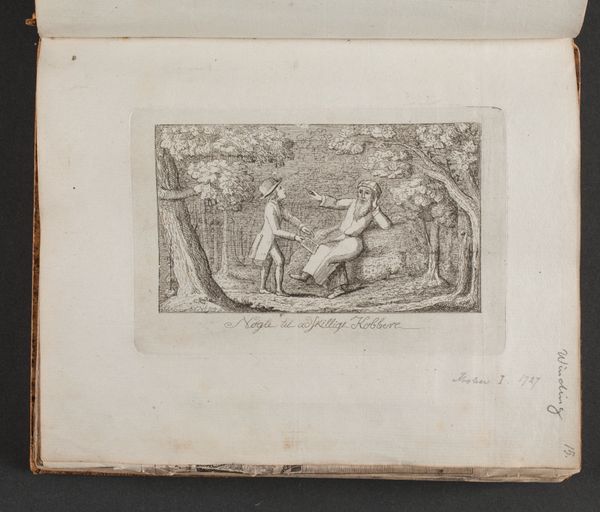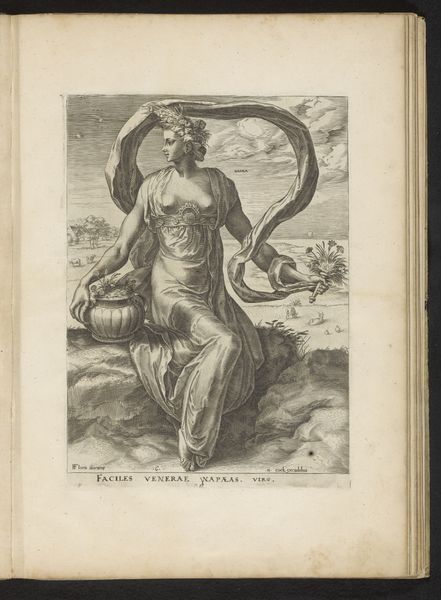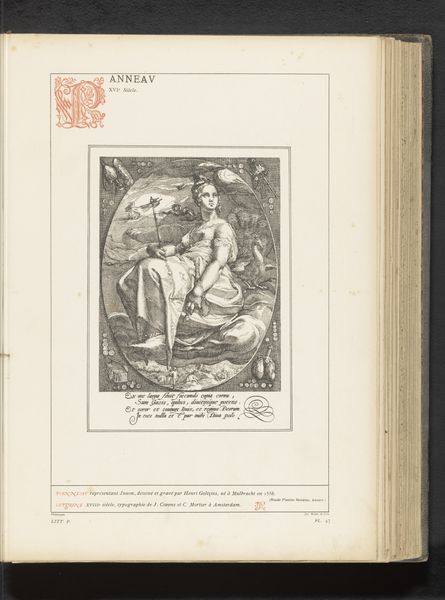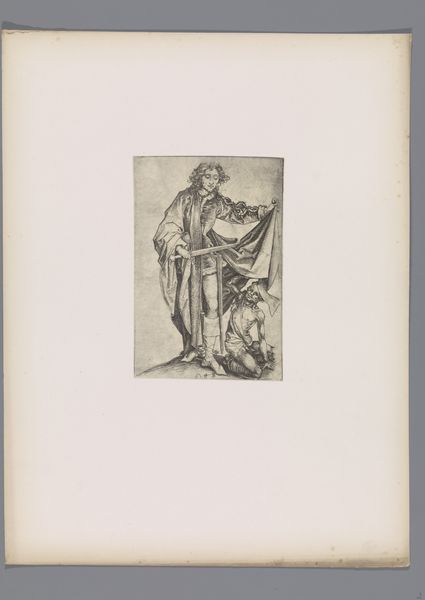
drawing, print, paper, ink
#
portrait
#
drawing
# print
#
figuration
#
paper
#
ink
#
coloured pencil
#
romanticism
Dimensions: 400 mm (height) x 320 mm (width) x 7 mm (depth) (monteringsmaal), 395 mm (height) x 314 mm (width) (bladmaal)
Curator: Let's explore this intriguing print titled "FREIA," created around 1845. It’s currently housed here at the SMK, Statens Museum for Kunst. Editor: Immediately, I’m drawn to the monochromatic palette, its heavy blacks creating an overall somber mood. And look at that exquisite ornamental frame! Curator: Indeed. This work embodies the spirit of Romanticism, doesn’t it? There’s Freia, of Norse mythology, seemingly lost in thought. Consider how representations like this reinforced a romantic ideal of feminine beauty and contemplation, circulating widely as accessible prints. Editor: Observe the detail of Freia's posture—her slumped figure and downward gaze convey a sense of melancholy. And that contrast: the detailed fur beneath her juxtaposed against the smoothness of her face. The artist really guides the viewer's eye. Curator: Precisely, and let's consider the public’s access to mythological figures in the mid-19th century. These images served as cultural touchstones, but also potentially reflected evolving societal expectations of women – seen as both powerful goddesses and vulnerable figures. Editor: It's an interplay of light and shadow – almost theatrical. See how that single star acts like a narrative device? What do you think it signifies within the larger composition? Curator: It could symbolize hope, or perhaps divine guidance. Prints such as these democratized art. The subject became known far beyond any aristocratic palace wall. But they also packaged ideas about history, mythology, and nationhood. Editor: Absolutely, and looking closely, the linework suggests real control, almost scientific in its precision but at the same time intensely expressive. The border reinforces the figure within, adding both symmetry and complexity. Curator: The accessibility of printed images provided ways through which shared cultural knowledge was established in homes, reinforcing public understanding and appreciation for historical figures. Editor: Looking closer, the image feels timeless in one respect and historical in another. This play offers a moment of personal reflection to me as a viewer. Curator: I agree. Examining the historical influence of works like "FREIA" reveals much about our own expectations when we interpret and share stories about mythological characters even now. Editor: Well, for me it speaks to a certain enduring visual language—the beauty of line, form, and the universal resonance of introspection itself.
Comments
No comments
Be the first to comment and join the conversation on the ultimate creative platform.


